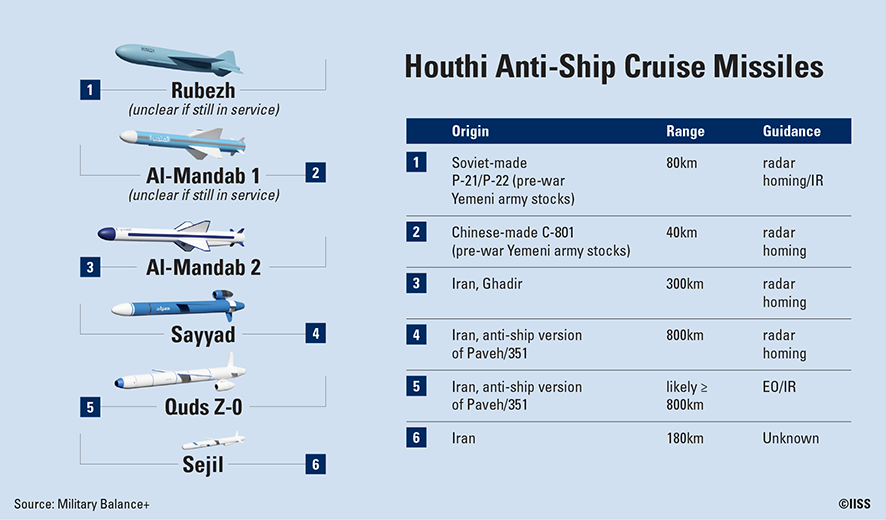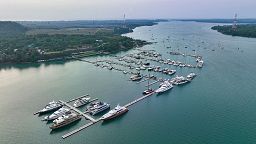Not at Their Best
Policies towards addressing anti-ship attacks in the Red Sea did not prevent some aggressive acts against civilian vessels recently that resulted in the loss of lives and entire ships. The pin prick deterrence via responding to threats after they occ

A chart of current missile types threatening mostly civilian vessels passing through the Red Sea.
Policies towards addressing anti-ship attacks in the Red Sea did not prevent some aggressive acts against civilian vessels recently that resulted in the loss of lives and entire ships. The pin prick deterrence via responding to threats after they occur is not sufficiently effective in addressing the issue, and further passive policies toward the eternal threats against international shipping need to be met with the same proactive vigour that had met such threats in the past. The focus on component exports for weapons seems to target more on the source of electronic production, where there is little that can be done militarily, as opposed to targeting the evident assembly plants for such weapons that would be a more accessible and easier mission to accomplish.
Anti-ship missiles that are being used in the current attacks mirror Soviet anti-ship missile technology from the 1970s and their future variants that work in a networked setting with radars and other electronic equipment. While targeting land radars is needed and has been part of the deterrence, the focus on ship based guidance weapons and radars should have been of top priority once the first missiles targeted international shipping. While military vessels have little issue downing those weapons, to fire Anti-Ship missiles at civilians from all over the world (weapons designed to sink a Frigate in one or two strikes) is like opening fire on an innocent crowd of people, and is clearly a crime against civilian vessels with intent to murder their international crew. Such an Act of War should be met with at least a proportional response, even if it means attacking the radar ships home port, as a lacking response has already encouraged more conflict.
The added threats of sea and air drones designed to Kamikaze civilian vessels is a new threat that is rapidly being addressed as new threats create new responses. A possible evolution of against assault drones could mirror the response to the first combat airplanes. As the first planes were used to bomb trenches in the First World War, the fighter plane was developed as a necessity to challenge and intercept the unchallenged bomber threat. A type of Interceptor Drone might be a solution our great grandfathers would have come up with, a practical solution to their past threats and new threats we are facing today. What was true back then as it is true now, that an assault on international shipping must be met with a swift, overwhelming, and effective response, as has been done in the past and will always be required.
Every society that has faced conflict has learned a similar lesson, that if you do not intend to counter threats, there will be more conflict. In the end, an absence of deterrence will lead to many more young citizens going to war in the near future. If there is an absence of strategy to challenge the source of arms and decision makers pick and choose grievances over components, as opposed to eliminating the actual missile production facilities, they are just slightly delaying the inevitable larger conflict.
Related
Share this page
Jagananna In Nellore

































